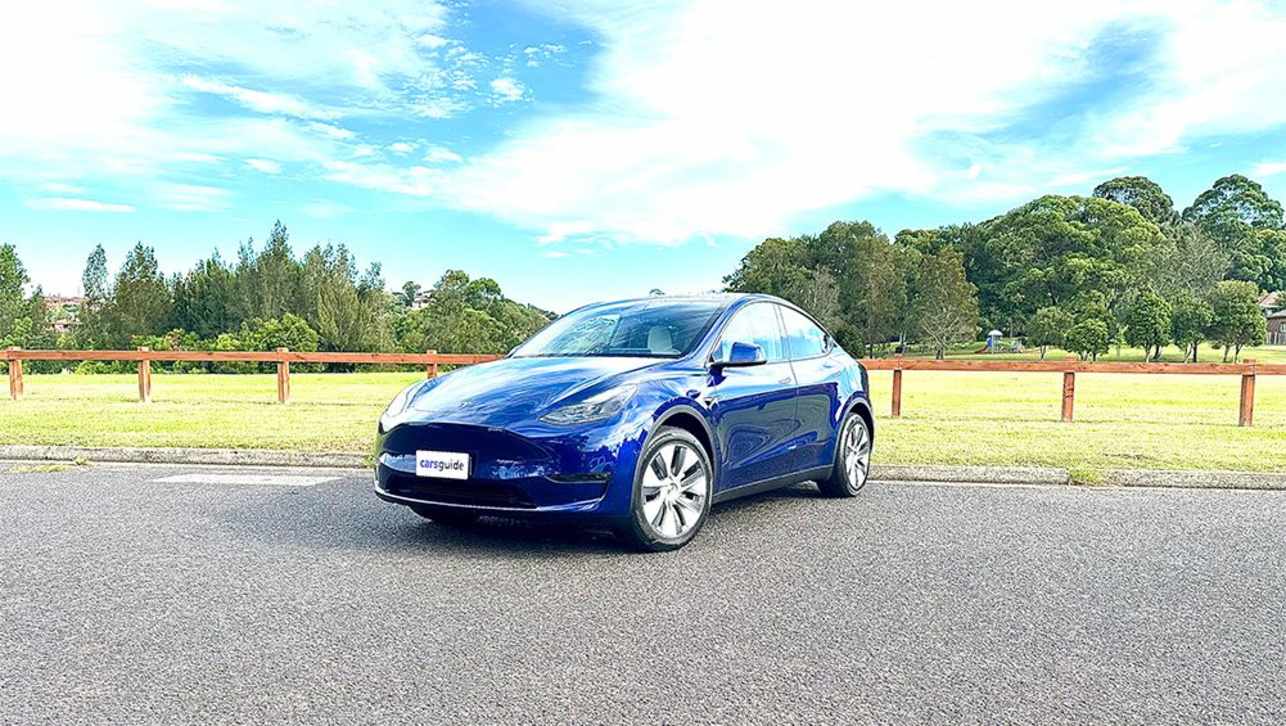Last night the ABC’s Four Corners program reported that up to 200,000 jobs are at risk once Australia's three car manufacturers close their factories by the end of 2017.
The TV news story quoted figures from a new report compiled by the University of Adelaide, called Closing The Motor Vehicle Industry: The Impact On Australia.
However, the headline figure of 200,000 potential job losses is inflated by up to 400 per cent, and one of the co-authors of the report, Professor John Spoehr, admits it may be too high.
The Advanced Manufacturing Council and Auto Skills Australia also dispute the University of Adelaide findings. News Corp Australia has learned the study included tens of thousands of workers in “automotive manufacturing”, as defined by Census, that do not work at companies that supply parts to Toyota, Holden or Ford.
The study’s figures include “automotive manufacturing” companies that also make truck bodies, trailers, tow-bars, caravans and other automotive parts that have no link to Australia’s car manufacturers -- and will continue once Ford, Holden and Toyota factories close. According to detailed analysis by the car industry, which has traced the job numbers at parts suppliers and associated industries, there are 45,000 to 50,000 workers employed across the sector.
But the University of Adelaide report said 198,826 jobs were at risk nationally after calculating the potential impact in the following states and territories:
Victoria: 98,483
NSW: 32,491
Queensland: 30,900
South Australia: 23,903
West Australia: 11,275
Tasmania: 1742
ACT: 421
NT: 421
In an interview with News Corp Australia journalists Joshua Dowling and Ben Pike, Professor John Spoehr explained the report’s findings -- and the anomalies in the numbers. In the end, he conceded that the forecast 200,000 job losses is an inflated figure and it was almost impossible to accurately measure. Below is an edited transcript.
Auto Skills Australia estimates the job losses in the car industry would be 50,000, and if you were to extrapolate that out to the rest of the economy it would be about 100,000. The 200,000 figure seems a bit stratospheric.
Well, you’ve got to take into account of the total downstream effects of any closure. We’re making the point the impact of a closure of this magnitude is going to have effects right down into the supply chain and beyond, into a range of other industries that are affected by the loss of wages and salaries that flow from people losing their (manufacturing) jobs.
We know in the real world that the job losses will be significantly less than 200,000, but this is a sobering presentation of the significance of the industry to Australia. If you take it out of Australia, it’s a significant hole that will be left. Even at 100,000 it’s a very substantial hole, so I’d expect the actual effects are going to be mediated by the scale of the assistance package and regional responses by state governments to diversify in the face of the closure.
The study’s estimated job losses of 23,903 workers in South Australia alone are more than three times higher than the 7000 job losses estimated in a report prepared for the SA Government by Professor Goran Roos in 2012. What is a number you’re more comfortable speculating, if there are not 200,000 national jobs at risk?
We can’t tell. Nobody can predict that. What we have to understand is what the significance of the industry is to the Australian economy and the labour market in its entirety, and then the actual impact will be a consequence of state, federal and private sector decisions in response to the closure. The work that Goran (Roos) was involved in, based in part on our work I think, didn’t take into account the full closure of the Australian auto industry. That (report) was largely based around the closure of (Holden) rather than the collapse of the entire industry.
But in preparing his report, Professor Goran Roos would have known that if Holden closed, Toyota would likely follow.
Most commentators were deeply concerned that if Holden closed, Toyota would follow, that it required keeping Holden here to keep Toyota here.
This report says very clearly that the projected job losses are 198,826, but in fact you say no-one can predict that. What is a fair number in your estimation?
In forecasting and projections, what you’re outlining is what the projected job losses are in the absence of policy change and in the absence of any major interventions. We can project what we think are the likely job losses, with some degree of accuracy, based on the robust methodology and modeling that the National Industry for Economic and Industry Research has been able to do for us, but what we don’t yet know is what the policy response at the national and state levels are.
If you were to know that, then you’d be able to determine what the absolute job losses might be. The problem with a total collapse of an industry like this, particularly one that’s heavily foreign-owned, is that we know that most of the investment will go offshore. It’s not going to be re-invested in Australia. So we know with a great deal of a reliability that the impact of the closure is that much worse than many other closures when an Australian-owned company might re-invest (in another industry).
Holden’s factory workforce peaked at about 8000 and the company has lost about 6000 workers over the past decade, and there doesn’t appear to be a major impact. Hasn’t Adelaide absorbed those workers?
I don’t think that’s true. Adelaide hasn’t absorbed those workers. The unemployment rate (in South Australia) is now at 7.1 per cent, which is very high by recent standards. The 30,000 manufacturing losses that have occurred (in the state) in the past 10 years are being seen in the unemployment figures and they’re being seen in the decline in full-time employment growth. Most of the growth in recent times has been in part-time and casual employment.
It doesn’t help us to look at the employment (at Holden, Ford and Toyota) directly to understand the full scale of the problem. What we’ve got to look at is the many hundreds of companies that surround those three companies, to better understand that, and that’s what this report does. It helps us understand the flow-on impacts to the Tier One and Tier Two (automotive parts suppliers) but also to the many companies that surround those companies and the companies that are dependent upon the salaries and the wages of (automotive manufacturing) workers.
You take that into account and you get across the nation this number of 200,000. We’ve never experienced in recent history the collapse of an entire industry and that’s what we’re experiencing.
With that in mind, do you think the Federal Government should have stepped in and offered an increase in assistance to the car makers and the parts supply industry?
I think it’s possible that we could have kept the industry in Australia for longer had a package of assistance been successfully negotiated with Holden.
Do you think the cost of keeping Holden and Toyota factories running would have been less than the cost of the forecast job losses and the potential impact on unemployment benefits?
I think the cost of adjustment would have been less if we’d been able to keep (car manufacturing) in the country for longer.
So you accept that it was inevitable that car manufacturing in Australia was going to close at some point?
I think that was largely dependent on the Australian dollar. The dollar remained very high and is still high, but it’s going to come down in the medium term. Had the dollar come down in the short term, Australian automotive manufacturers would have been in a much stronger position.
This is the problem that Australian manufacturing as a whole faces. It’s a bit like drought in the agricultural sector. These are exceptional circumstances, out of the control of the manufacturing industry, so it needs support through this period of exceptional circumstances, when the dollar is above its value and makes Australian manufacturing uncompetitive internationally.
Your figures show 30,090 jobs are at risk in Queensland and 32,491 jobs are at risk in NSW, even though car manufacturing and the bulk of the parts suppliers are in Victoria and South Australia. Would you be advocating that NSW and Queensland also have some form of government intervention to cover for these job losses?
Yes. The scale of the job losses is very significant. It’s a national problem, not just South Australia and Victoria. Although the worst hit parts of Australia are concentrated in South Australia and Victoria, Western Sydney is also badly affected as is Sydney itself, from the collapse of the auto industry. So the answer is that it requires a national adjustment package focused on the four states.
It’s not well understood that there is very significant manufacturing capability in NSW and Queensland, because Queensland is known as a mining state and NSW is better known as a business services state. The four states combined are the manufacturing heartland of Australia.
What do you expect the impact will be on Western Sydney of the car factory closures in Victoria and South Australia?
It’s incredibly difficult for places like Western Sydney to absorb shocks of this magnitude, on the back of a long period of structural challenge and relatively high rates of unemployment by Australian standards. People who lose their jobs in those areas are going to find it very difficult to find alternative jobs, particularly in manufacturing, because of the long run decline in Australian manufacturing jobs: 100,000 manufacturing jobs have been lost in the last decade, and a large number of those in that part of the nation as well as South Australia and Victoria. So it forces those workers to look further afield and that has all sorts of problems in places like Western Sydney.
Unfortunately the experience of major closures like this, particularly of mature age male manufacturing workers, is periods of unemployment and long-term unemployment. Unless significant programs are put in place to provide alternative employment opportunities in infrastructure projects and construction projects, many of the manufacturing workers in Western Sydney will find it difficult to attain work with a similar level of security and a similar level of remuneration and many will, unfortunately, experience unemployment.
Do you have any examples of manufacturing facilities in Sydney that supply automotive parts to Australia’s three car makers? Or do these figures take in companies that make trailers and truck bodies, for example, that don’t have anything to do with car manufacturing and will likely continue?
The figures include the full gamut of jobs, so you’re picking up lots of indirect jobs. This is based on the Australian Bureau Of Statistics Input-Output tables, in terms of the presence of automobile activity in each of the states, and the significance of that auto activity throughout the NSW economy. And more-so in NSW than in South Australia and Victoria, (the figures) are going to (include) jobs that are indirect rather than direct.
How did you trace, for example, a manufacturing job in Western Sydney to a production line at Toyota, Holden or Ford?
It’s the presence of auto economic activity and workers in that region.
But that doesn’t necessarily mean they’re making parts for car-makers. There are companies making trailers and other automotive components such as tow-bars that have nothing to do with Toyota, Holden and Ford. The concern is, it undermines the data if there is not a link with a lot of these numbers that are being used to add up to 200,000 nationally.
The modeling is no different to any other input-output based modeling. It’s imperfect science, but that’s the nature of all modeling. There’s no other real way of doing it. You’re not going to find an alternative to that. It’s important to exercise caution in the use of any modeling statistics.
They’re the best tools that we’ve got to understand the significance of the industry and it takes us a lot further than the fairly narrow debate that we’ve had so far about the direct jobs from the three main manufacturers (Toyota, Holden and Ford). Their employment has reduced a lot over the last seven or eight years but that masks the much deeper roots of the auto industry.
Won’t most displaced automotive manufacturing workers find new jobs? Other reports estimate up to 70 per cent of redundant manufacturing workers will find new jobs.
It’s just not credible to expect in the current environment, when manufacturing jobs are hemorrhaging in Australia, for those workers to find alternative jobs at that rate. This is not like it was during the Mitsubishi closure (in 2008). This is a totally different ball game, when growth is much slower and manufacturing nationally is in recession. So there are no easy transitions for manufacturing workers in the current environment. It will take a lot of assistance to retrain and re-qualify and recognise the skills of those workers to be able to ensure that they have a reasonable chance of getting jobs in alternative sectors.
The (jobs) growth is mainly in health and community services. It just is not credible that they can all shift to health, aging and community services. They’re not qualified for it and many are just simply not going to be interested or willing to make that transition. Many of them are middle-aged workers who would be much better positioned to work in related sectors and the obvious sector for transition is the area of construction and infrastructure. The push to accelerate industrial diversification through advanced manufacturing is very important but that’s going to be slow to unfold. It’s a 10-year proposition.
Finally, what would you say to those who dismiss the figure of 200,000 job losses as being too high?
We’re not saying that 200,000 people are going to lose their jobs. We’re just indicating that this is the significance of the industry, and when you’re considering how to respond to the closures, you need to understand the significance of the industry.
This reporter is on Twitter: @JoshuaDowling








.jpg)

.jpg)
.jpg)


.jpg)

.jpg)
.jpg)

.jpg)


.jpg)







Comments